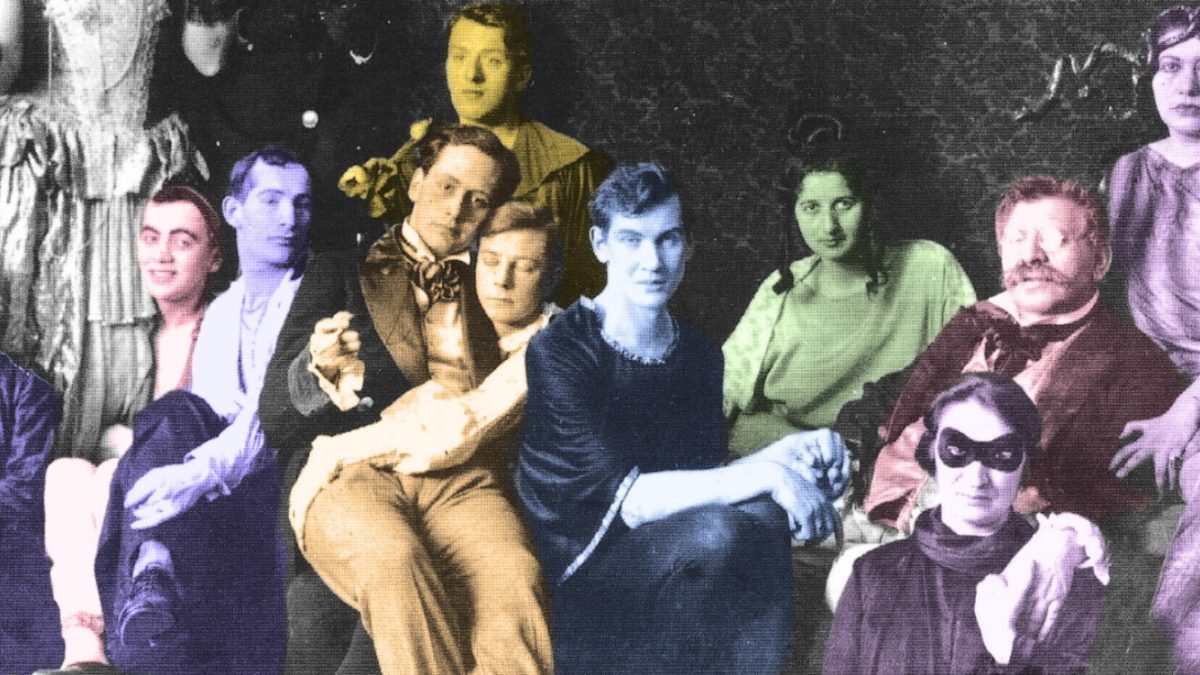In 1896, penning his first gay-rights pamphlet, German-Jewish physician Magnus Hirschfeld staked a provocative claim: sexual orientation is a continuum. Between extremes of heterosexuality and homosexuality ranged innumerable shades in between.
Article continues after advertisement
A decade later, as a renowned Berlin psychotherapist, Hirschfeld theorized that each person is a mix of masculinity and femininity and opened the door to trans identity. “The sex of a person lies more in his mind than in his body,” he wrote, “more in the brain than in the genitals.”
In his final work, published posthumously in the Nazi years, Hirschfeld issued his last prophetic pronouncement. Writing in exile after a globe-spanning research trip, he declared that race is a social construction—a human invention, not a scientific discovery.
In his remarkable life, cut too short, Dr. Hirschfeld was more than a transformational thinker, he was a passionate activist as well. In World War I, he advocated for gay, lesbian, and trans individuals to serve openly in the German military. In the 1920s, he built his Institute for Sexual Science, which housed both the clinic where the world’s first gender-affirming surgeries were performed and the sex museum that became Weimar Berlin’s must-see tourist attraction. When the Nazis gained power and drove him abroad, he tried with his last breath to rally the allies he called “we anti-racists” against what he chillingly termed the “poison gas [of] racism.”
Hirschfeld was a visionary. He saw the natural world as one of seamless continua and endless variation, and we humans were part of it.
He was world famous. As a celebrity sex therapist, Hirschfeld, with his trademark walrus moustache, made newsreel cameos. He gave interviews to newspapers everywhere from Seattle to Shanghai. As the intellectual impresario of Weimar Berlin, there was even a bawdy cabaret number about him, “Der Hirschfeld kommt!,” that poked good-natured fun at the rumpled sexologist.
Above all, though, Hirschfeld was a visionary. He saw the natural world as one of seamless continua and endless variation, and we humans were part of it. For his theory of sexual relativity, he was dubbed the “Einstein of Sex.” Flattered and humbled, a blushing Hirschfeld conceded that there was something to it. As he wrote in exile, “Though I have always protested against this comparison with the founder of the theory of relativity,” there’s an obvious parallel between Einstein’s theory of relativity and “the view, sustained by me, that each human being [is] not absolutely but only relatively…male or female.”
This theory could change your life. A Chinese journalist who interviewed Hirschfeld in Shanghai in 1931, told readers how it had changed his. “Whether you like it or not,” wrote E. K. Moy of the China Press, “you bear certain characteristics of the opposite sex in more or less extent.” In his own case, Moy confessed, he’d long been haunted by his “predilection for what is commonly recognized as a stereotypically feminine interest in flowers.” But now, guided by Hirschfeld’s theory of sexual relativity, he realized that such an interest “is natural and normal to me.” From this seed of self-compassion, Moy explained, a wider compassion for everyone else blossomed. Making peace with one’s own gender nonconformity—the inevitable queerness in oneself—led to an acceptance of the queerness in all others.
For those who think themselves “normal,” Moy wrote, “a homosexual is regarded as a criminal; a person who cannot be happy unless he or she can wear the garments affected by the opposite sex, is a freak.” But as Hirschfeld taught, “there is no normal male or female.” Indeed, if each individual is composed of a unique assortment of qualities deemed masculine and those deemed feminine, the categories themselves collapse. What, after all, is so feminine about flower arranging? Or, for that matter, so masculine about journalism?
Traveling the globe, Hirschfeld discerned that race was relative too. He got welcomed into spaces in foreign-dominated Shanghai as a “European” and in America as a “white” person from which his native Germany now barred him as a “Semite.” Yet he was the same Magnus Hirschfeld wherever he went. Racial categories, he now saw, were arbitrary creations conjured by those in power. Biologically, each person’s race was a record of all the reproductive sex their far-flung ancestors had had, openly or in secret. Our race was as unique as our fingerprints.
Yet today the Einstein of Sex, once so famous and still so astonishingly ahead of his time, is little known. While Albert Einstein is justly renowned, his theories—even for those who can understand them—won’t change your life. Try telling the gate agent that time is relative the next time you miss a flight. Meanwhile it is the Einstein of Sex whose transformative ideas focus on our everyday obsessions of identity and sexuality, the visionary who can help you understand who you are—from your complex ethnic background to your secret kinks—who has gone missing. Hirschfeld’s 1907 pronouncement that “the sex of a person lies more in [the] mind than in [the] body” sounds like it was written last week. How do we not know him?
The Nazis, of course, with their fanatical insistence on strict gender roles and even stricter bloodlines, did plenty to destroy Hirschfeld. They nearly stoned him to death in the streets of Munich, chased him from Berlin, and raided his institute. On that infamous Berlin night in 1933, those were Hirschfeld’s books they were burning. As they paraded a bust of Hirschfeld on a pike, illuminated by the flames of over ten thousand volumes seized from his institute’s archive, one stormtrooper sneered that had Hirschfeld not already fled, they’d “string him up or beat him to death.”
Yet even as they threatened Hirschfeld, the Nazis never disappeared him. Instead, they fulminated endlessly about their gay, Jewish, social democratic archenemy. Even as they shuttered his institute and destroyed documents from its archives—including some on which former patients, now prominent Nazis, had placed themselves on Hirschfeld’s continuum of queerness—they continued to trot out Hirschfeld in their propaganda as “the most repulsive of all Jewish monsters.”
Instead, it was Hirschfeld’s ostensive allies, colleagues like Sigmund Freud and other well-meaning opponents of fascism who went silent on him, terrified that his gayness would discredit the cause of human freedom. This is why today we may know Hirschfeld’s theory of sexual orientation as a continuum but call it the “Kinsey Scale” for Alfred Kinsey, the crew-cut Midwestern sex researcher who swiped Hirschfeld’s concept decades later. And it is why we know the Nazi book burning so well that we can conjure the grainy newsreel footage in our minds, yet we were never taught whose books were being burned. For many historians and educators, Hirschfeld was until just recently too hot, too controversial, and, frankly, too queer to mention.
A century later, needing to read Hirschfeld between the lines can be frustrating. But it can also be fun.
In fairness, it wasn’t just Hirschfeld’s liberal allies who didn’t want to talk about his queerness; he himself didn’t want to talk about it either. To be taken seriously as a theorist and advocate in his time and place, he had to present himself as a disinterested scientist whose personal life was beside the point. In his writings, he kept his gay identity studiously private, invariably writing about “the homosexuals” in the closest third person as “they,” not “we.” Playing the stodgy German man of science, for his theory of sexual relativity, he even came up with his own e = mc2. Hirschfeld’s complex factorial equation, when computed, shows that there are over forty-three million possible mixtures of masculinity and femininity in any given human, in effect, forty-three million possible genders.
Recovering Hirschfeld today requires reading like a sleuth. Luckily, he left quite a trail of breadcrumbs—tens of thousands of pages of books, pamphlets, articles, questionnaires, travel guides, and open letters. He also left the annual reports of the Scientific Humanitarian Committee, the queer-rights organization he founded and led, numerous photographs of the exhibits he mounted at his institute, and even footage from the 1919 gay-rights film he made, which miraculously survived the Nazis.
In his sprawling oeuvre, Hirschfeld’s life, like his gayness, hides in plain sight. He writes, for example, of the “images and inscriptions by homosexuals [of] phalluses sketched with coal or pencil” that he “found scratched into [men’s room] walls…all the way from Chicago to Tangier” to signal a cruising spot. From the chronology of his life, we know that he visited Chicago and Tangier as a gay man in his twenties during his first overseas trip. We can’t know for sure what went down, but it was presumably something. In the gender-bending Weimar Berlin that he more than anyone created, he depicted trans nightlife spaces as if he were purely a researcher, not a participant. But from a colleague reminiscing long after his death we can infer that Magnus sometimes went in drag as “Auntie Magnesia” (Tante Magnesia), a dowdy feminine version of his buttoned-down self. Similarly, most of what we know about Hirschfeld’s long-term partnerships with Berlin-born Karl Giese and Li Shiu Tong of Hong Kong, comes from gossipy descriptions by members of their circle. Among those dishing was Christopher Isherwood, the British writer behind Goodbye to Berlin (the novel that inspired the musical, Cabaret) who boarded at Hirschfeld’s institute as a young gay expat in the 1920s. Hirschfeld feared that being known as a queer polyamorist would have discredited him. In his era, it surely would have. A century later, needing to read Hirschfeld between the lines can be frustrating. But it can also be fun.
__________________________________

From The Einstein of Sex: Dr. Magnus Hirschfeld, Visionary of Weimar Berlin by Daniel Brook. Copyright © 2025. Available from W.W. Norton & Company.
